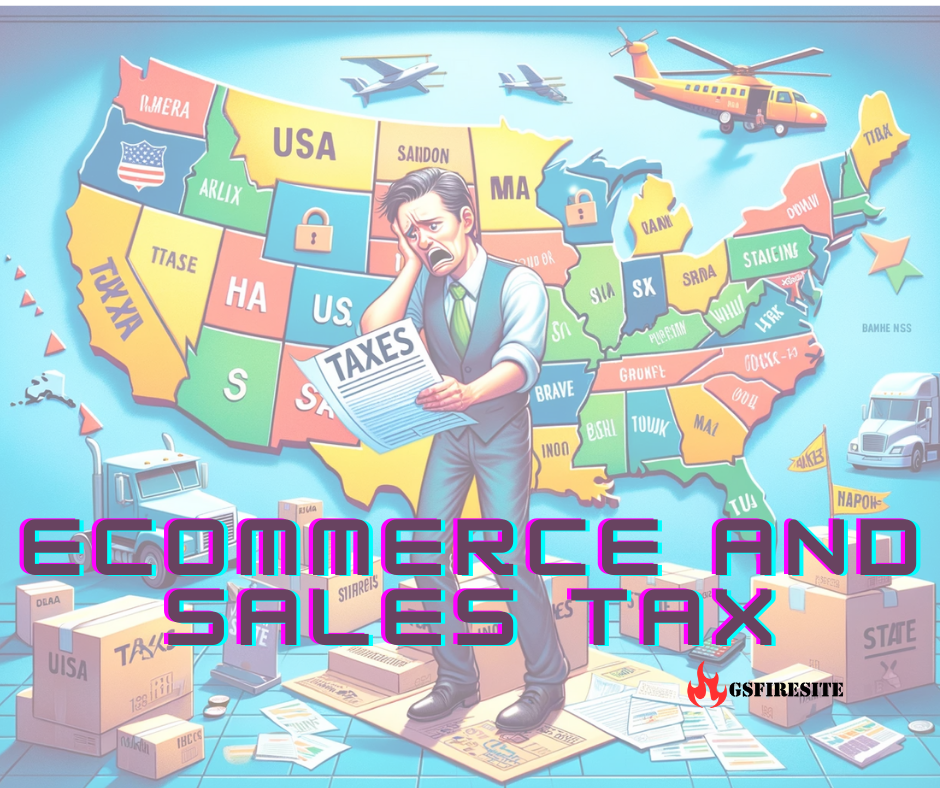E-Commerce And Sales Tax

State and Local Taxation in Ecommerce: Navigating the Maze
Owning an ecommerce store introduces a unique set of challenges and responsibilities, particularly when it comes to understanding and complying with state and local tax laws. These taxes, while complex, are essential components of operating a successful online business.
State Sales Tax in Ecommerce
Each state in the U.S. has its own set of rules and rates for sales tax. For ecommerce stores, this means that the sales tax you need to collect can vary greatly depending on where your customers are located. Most states follow a destination-based sales tax model, meaning the tax rate is based on the location of the buyer, not the seller. This model requires ecommerce businesses to be aware of the varying tax rates and rules across different states.
Additionally, some states are origin-based, meaning the sales tax rate is determined by the location of the seller. This adds another layer of complexity for ecommerce businesses operating in or selling to customers in these states.
Local Tax Jurisdictions
Beyond state-level taxes, many local jurisdictions (like cities and counties) impose their own sales taxes. These local taxes are added on top of the state tax. Ecommerce businesses must be aware of these local tax rates, as they can differ significantly even within the same state. This means a product sold to one city might have a different total tax rate compared to the same product sold to a neighboring city.
Exemptions and Special Tax Rates
Some products may be tax-exempt or subject to special tax rates in certain states or localities. For example, clothing is exempt from sales tax in some states, while others have special tax rates for items like alcohol or tobacco. Ecommerce stores need to be aware of these exceptions and apply them correctly in their sales process.
Tax Collection and Compliance
The responsibility of collecting and remitting sales tax falls on the ecommerce store once it establishes nexus in a state or locality. Compliance involves several steps:
Registering for a Sales Tax Permit: Before you can collect sales tax, you must register for a sales tax permit in the states where you have established nexus.
Collecting the Correct Amount: This involves applying the correct tax rate at checkout, taking into account both state and local taxes.
Filing and Remittance: After collecting sales tax, businesses are required to file returns and remit the collected taxes to the appropriate tax authorities. This process usually involves detailed reporting of sales data.
Staying Informed on Changes: Tax laws and rates can change. It's crucial for ecommerce businesses to stay updated on these changes to ensure ongoing compliance.
The Role of Technology in Tax Compliance
Modern ecommerce platforms and tax software play a crucial role in helping businesses navigate these complexities. They can automate the calculation of sales tax rates, file tax returns, and keep up with the ever-changing landscape of state and local taxation laws. Investing in robust ecommerce software is not just a convenience; it's a necessity for maintaining compliance and focusing on business growth.
Understanding Ecommerce Taxation: Economic Nexus and the Impact of South Dakota vs. Wayfair
In the evolving landscape of ecommerce, understanding taxation is crucial for online businesses. The crux of this complexity can be traced back to the concept of 'economic nexus' and the pivotal legal case, South Dakota vs. Wayfair.
Economic Nexus and State Taxation
Economic nexus refers to the criteria that determine when a business must collect and remit sales tax in a state where it does not have a physical presence. This concept has become a cornerstone in ecommerce taxation, fundamentally altering how out-of-state businesses are taxed.
Each state in the U.S. has set its own economic nexus thresholds. These thresholds are often defined by either the amount of sales (monetary value) or the number of transactions conducted in that state. For example, a state might require out-of-state sellers to collect sales tax once they have either 200 transactions or $100,000 in sales in the state within a year.
The South Dakota vs. Wayfair Decision
The landmark Supreme Court decision in South Dakota vs. Wayfair, Inc. (2018) dramatically shifted the ecommerce tax landscape. Before this ruling, states could only tax businesses with a physical presence within their borders. However, the decision acknowledged that the physical presence rule, established in Quill Corp. vs. North Dakota (1992), was outdated in the context of modern ecommerce.
South Dakota vs. Wayfair upheld South Dakota's law that required out-of-state sellers to collect and remit sales tax if they met certain sales or transaction thresholds, even without a physical presence. This ruling set a precedent, and as a result, most states have adopted similar economic nexus laws.
Implications for Ecommerce Software
This shift necessitates sophisticated ecommerce software capable of navigating these complex tax regulations. Key functionalities of such software include:
Tracking Orders: Ecommerce platforms must track the number and value of orders originating from each state. This data is crucial to determine when a business crosses the economic nexus threshold in a particular state.
Automated Tax Collection: Once the nexus thresholds are reached, the software should automatically begin collecting sales tax for that state. This feature ensures compliance with state tax laws and reduces the administrative burden on businesses.
Tax Rate Calculation: The software must accurately calculate the applicable sales tax rate, which can vary not just from state to state but also within different jurisdictions in the same state.
Reporting and Remittance Support: Generating reports for sales tax filing and assisting in the remittance process are essential components, making it easier for businesses to comply with various state regulations.
Navigating state and local taxation is a daunting but essential task for ecommerce store owners. Understanding the nuances of different tax jurisdictions, staying compliant with tax collection and remittance, and leveraging technology for efficient management are key to operating a successful and legally compliant ecommerce business. The complexity of these tasks underscores the importance of being well-informed and equipped with the right tools and resources.
The South Dakota vs. Wayfair decision has undeniably transformed the ecommerce taxation system, emphasizing the importance of economic nexus in state-level taxation. Ecommerce businesses must leverage advanced software solutions to navigate these complexities, ensuring compliance and efficient operation in a multi-state commerce environment. Understanding and adapting to these tax regulations is not just a legal necessity but a strategic advantage in the ever-expanding world of ecommerce.
